Related Research Articles
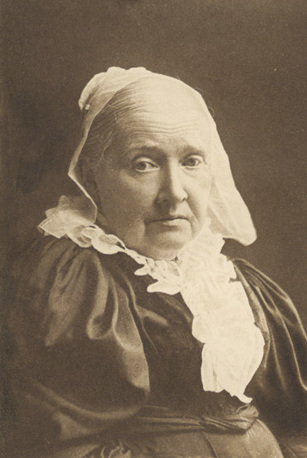
Julia Ward Howe was an American author and poet, known for writing the "Battle Hymn of the Republic" and the original 1870 pacifist Mother's Day Proclamation. She was also an advocate for abolitionism and a social activist, particularly for women's suffrage.

Boston University Chobanian & Avedisian School of Medicine (CAMED), formerly known as Boston University School of Medicine, is the medical school of Boston University, a private research university in Boston. It was founded in 1848. The medical school was the first institution in the world to formally educate female physicians. Originally known as the New England Female Medical College, it was subsequently renamed Boston University School of Medicine in 1873, then Chobanian & Avedisian School of Medicine in 2022. In 1864, it became the first medical school in the United States to award an M.D. degree to an African-American woman.

Diocletian Lewis, commonly known as Dr. Dio Lewis, was a prominent temperance leader and physical culture advocate who practiced homeopathy.

Ednah Dow Littlehale Cheney was an American writer, reformer, and philanthropist.

William Andrus Alcott, also known as William Alexander Alcott, was an American educator, educational reformer, physician, vegetarian and author of 108 books. His works, which include a wide range of topics including educational reform, physical education, school house design, family life, and diet, are still widely cited today.
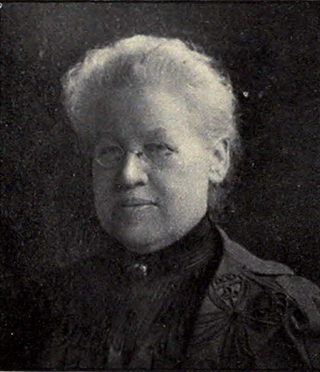
Eliza Maria Mosher was a United States physician, inventor, medical writer, and educator whose wide-ranging medical career included an educational focus on physical fitness and health maintenance. She was the first Dean of Women at the University of Michigan, and the first woman professor to be recognized by the university.

Darius Cobb was a noted American painter. Cobb was considered to be one of America's best painters during his lifetime, as well as a painter of society portraits, landscape, religious themes and historical costumes. He was also noted as a musician, singer, poet, lecturer, lithographer, and art critic.
Amory Hall was located on the corner of Washington Street and West Street in Boston, Massachusetts, in the 19th century. Myriad activities took place in the rental hall, including sermons; lectures by Henry David Thoreau, Ralph Waldo Emerson, William Lloyd Garrison; political meetings; exhibitions by Rembrandt Peale, George Catlin, John Banvard; moving panoramas; magic shows; concerts; and curiosities such as the "Nova Scotia Giant Boy."

The New England Women's Club of Boston, Massachusetts, was one of the two earliest women's clubs in the United States, having been founded a couple of months after Sorosis in New York City.
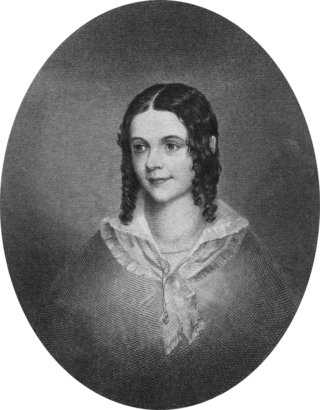
Sarah Carter Edgarton Mayo was an American author and editor.
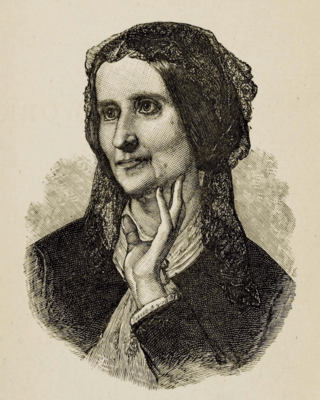
Mary Sargeant Gove Nichols, also known by her pen name Mary Orme, was an American women's rights and health reform advocate, hydrotherapist, vegetarian and writer.
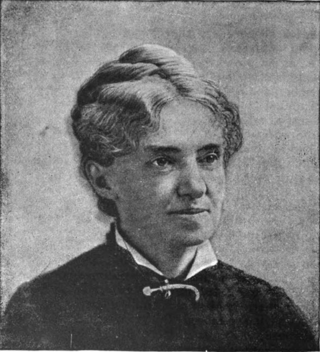
Abba Goold Woolson was a 19th-century American teacher, author, and poet from Maine. Woolson published several volumes, including: Women in American Society (1873); Dress Reform (1874); Browsing Among Books (1881); and George Eliot and Her Heroines (1887).
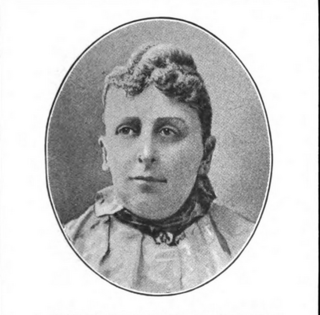
Harriet Abbott Lincoln Coolidge was an American philanthropist, author and reformer. She did much in the way of instructing young mothers in the care and clothing of infants, and furthered the cause to improve the condition of infants in foundling hospitals. She contributed a variety of articles on kindergarten matters to the daily press, and while living in Washington, D.C., she gave a series of "nursery talks" for mothers at her home, where she fitted up a model nursery. Coolidge was the editor of Trained Motherhood; and author of In the Story Land, Kindergarten Stories, Talks to Mothers, The Model Nursery, and What a Young Girl Ought to Know. She was one of the original signers of the Society of the Daughters of the American Revolution, and was an active member of four of the leading charity organizations in Washington. She died in 1902.
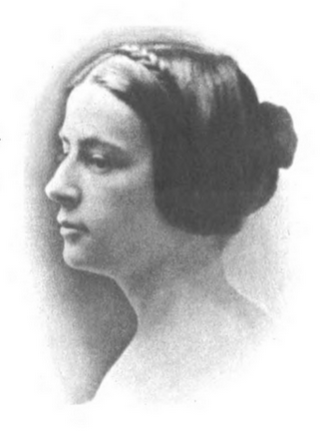
Martha Perry Lowe was an American writer of poetry and prose, as well as a social activist and organizer. She supported women's rights, temperance, education, and Unitarian organizations. Born in New Hampshire in 1829, her parents were General Justus Perry and Hannah Wood. She was a descendant of William Wood, the supposed author of New England's Prospects, who left England and settled in Concord in 1638. At the age of 15, Lowe was sent to Sedgwick's School for Young Ladies. After her graduation, she spent a winter in the West Indies, and the following year was passed in Madrid with her brother, who was a member of the Spanish legation. In 1857, she married the Rev. Charles Lowe who died in 1874, and at the time of his death was a member of the Somerville school committee. In 1871, when the family went to Europe, Lowe corresponded regularly for the Liberal Christian. In Somerville, she was connected with the Unitarian Review. She was the author of several books of prose and poetry; the most noted ones include The Olive and the Pine, Love in Spain, and a Memoir of Charles Lowe. She was interested in many public and private philanthropies, but her chief interests were in the public schools. She was among the first to advocate the teaching of cooking and sewing, and at her suggestion a sum of money was raised for that purpose. She was one of the founders of the Educational Union in Somerville, one of whose duties was a regular visitation of the schools by its members. She was a member of the Society of American Authors of New York, the Authors' Club of Boston, the Woman's Education Association, and the Unitarian Church Temperance Society, as well as an honorary member of the Castilian Club, of the Heptorean Club, of the Teachers' Annuity Guild, honorary president of the Woman Suffrage League, a director of the Massachusetts Suffrage Association, president of the Woman's Alliance of the First Unitarian Church, and a member of the Cambridge Branch of the Indian Association. She died in Massachusetts in 1902.
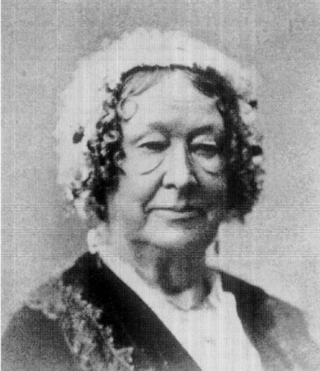
Eunice Hale Cobb was an American writer, public speaker, and activist. She was born in Kennebunk, Maine, in 1803 and she married Rev. Sylvanus Cobb in Hallowell, Maine, in 1822. She was a devoted and efficient assistant to his religious work as a Universalist preacher. Her eldest son, Sylvanus, Jr., derived much of his noted faculty for story-telling from her practice of telling him stories – often continued from evening to evening, as he sat at her feet when a child. She wrote hymns, and occasional poems, and obituary lines. Her faith in God was expressed in all her poetry. As a public speaker, she was very persuasive and convincing. She was the first female president of the Ladies Physiological Institute, of Boston, and served it in that capacity for some 15 years. She died in 1880.

Caroline M. Sawyer was a 19th-century American poet, writer, and editor. Her writings ranged through a wide variety of themes. Born in 1812, in Massachusetts, she began composing verse at an early age, but published little till after her marriage. Thereafter, she wrote much for various reviews and other miscellanies, besides several volumes of tales, sketches, and essays. She also made numerous translations from German literature, in prose and verse, in which she evinced an appreciation of the original. Sawyer's poems were numerous, sufficient for several volumes, though they were not published as a collection.
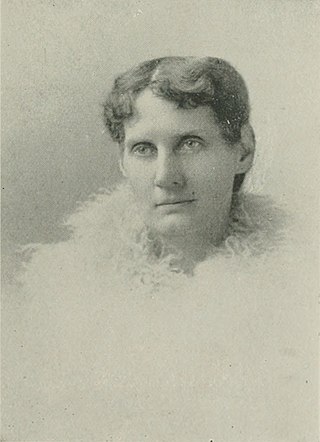
Lucy M. Hall-Brown was an American physician and writer. She was a general practitioner and a physician at the Sherborn Reformatory for Women, now the Massachusetts Correctional Instituion – Framingham.

Ella Eaton Kellogg was an American dietitian known for her work on home economics and vegetarian cooking. She was educated at Alfred University ; and the American School Household Economics (1909). In 1875, Kellogg visited the Battle Creek Sanitarium, became interested in the subjects of sanitation and hygiene, and a year later enrolled in the Sanitarium School of Hygiene. Later on, she joined the editorial staff of Good Health magazine, and in 1879, married Dr. John Harvey Kellogg, superintendent of the Battle Creek Sanitarium.
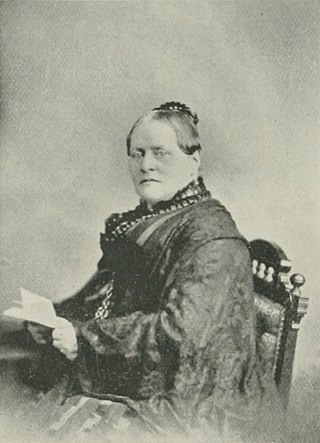
Martha H. Mowry was an American physician and the first woman physician in the U.S. state of Rhode Island. She was also an advocate for women's suffrage and human welfare reform.
Eunice Powers Cutter was an American teacher, who was active in the Abolistionist movement, and wrote one of the most popular children's textbooks on anatomy in the Antebellum period. She was born in Massachusetts and educated there and in Connecticut before becoming a teacher in 1843. After her marriage, she assisted her husband in writing university-level anatomy textbooks. She presented lectures on hygiene to women's groups and community gatherings through the mid-1850s and published textbooks on anatomy aimed at grammar school children. In 1856 or 1857, the family moved to Kansas and participated with John Brown in the efforts to ensure that Kansas Territory entered the union as a free state.
References
- ↑ The Makers of the Mold, by Kenneth W. Newcomb, 1996
- ↑ The New Werner Twentieth Century Edition of the Encyclopædia Britannica, 1907, Page 261
- 1 2 3 New England Magazine Company 1908, p. 553-54.
- ↑ Massachusetts 1851, p. 481.
- ↑ Ladies' Physiological Institute (Boston, Mass.) Records, 1848-1966: A Finding Aid, Arthur and Elizabeth Schlesinger Library on the History of Women in America, Radcliff College, Cambridge, MA
Bibliography
 This article incorporates text from this source, which is in the public domain :Massachusetts (1851). Resolves of the General Assembly of the State of Massachusetts-Bay (Public domain ed.). Secretary of the Commonwealth.
This article incorporates text from this source, which is in the public domain :Massachusetts (1851). Resolves of the General Assembly of the State of Massachusetts-Bay (Public domain ed.). Secretary of the Commonwealth. This article incorporates text from this source, which is in the public domain :New England Magazine Company (1908). The New England Magazine. Vol. 38, 44 (Public domain ed.). New England Magazine Company.
This article incorporates text from this source, which is in the public domain :New England Magazine Company (1908). The New England Magazine. Vol. 38, 44 (Public domain ed.). New England Magazine Company.